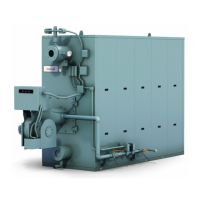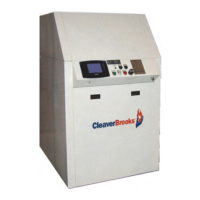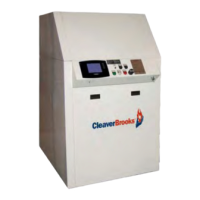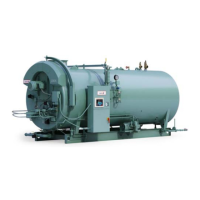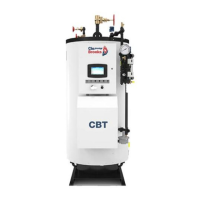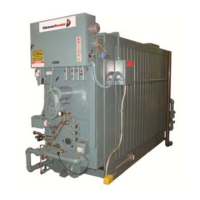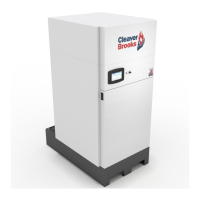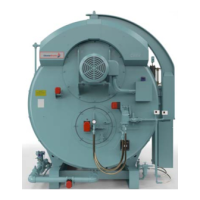STARTING AND OPERATING INSTRUCTIONS Chapter 5
750-177 5-17
small increments. This will cause the butterfly valve to
open farther, allowing more gas into the burner. While
increasing the input, observe that the O
2
levels remain
within the range shown in Table 5-1. Adjust the gas
pressure regulator, as necessary, to correct this situation.
Continue to do this until the burner reaches high fire (the
potentiometer is at the open position).
15. Adjust the high fire gas input to match the maximum
rating. At high fire, the butterfly valve should be near the
full open position (readjust linkage if required). Adjust
the gas pressure to obtain the correct fuel input.
(Maximum pressure specified on the burner specification
plate.)
If a dedicated gas meter is available, the following for-
mula may be used to check fuel flow. Conduct this mea-
surement while operating at a constant rate.
NOTE: Some meters may require 6.0 IN. H
2
0
correction to Pgas. Consult meter
calibration data.
Where:
HHV = The higher heating value of natural gas (1000
Btu/ft
3
). Contact your local gas company for an exact
measurement.
P
atm
= Atmospheric pressure in inches of mercury.
P
gas
= Gas pressure ahead of the volumetric flow meter
in inches of mercury.
T
gas
= Gas temperature at the volumetric flow meter in
°F.
RATE = Natural gas rate taken with the volumetric flow
meter in ft
3
/second
S = Seconds.
NOTE: Select the appropriate burner nozzle size curve based on the burner
size and capacity stamped on the burner nameplate (see Figure 5-8).
Input (MMBtu/hr)
Gas Input = (HHV) x
Patm + Pgas
29.92
xxx
=
520
Tgas + 460
3600
hr
RATE
ft
3
s
s
Btu
hr
Figure 5-14: Burner Input vs. Oil Pressure and Nozzle Size (Size 3 Burners)
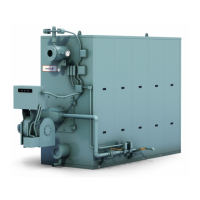
